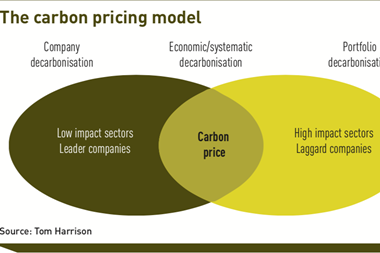With the world facing considerable and pressing environmental and social problems, the investment world has a critical role to play in addressing issues such as climate change, inequality and discrimination.
Fixed income investors are particularly well placed to respond to these challenges: as long-term lenders, they have the potential to exercise considerable influence over corporations and governments, encouraging and facilitating improvements that, in turn, can help underpin the sustainability of returns.
Combine the asymmetric nature of credit risk and return, and the criticality of understanding the impact of risk, as opposed to fixating on its origin, there is arguably no asset class to which sustainability is more important than fixed income.
Yet, despite this, the ways in which ESG considerations are integrated into fixed income investing are much less established than in equity markets, with an evolving debate continuing around what constitutes best practice, both in terms of the ‘good’ it can do and the returns such approaches can deliver.
At first glance, this might seem surprising and it would be all too easy and convenient to assume that approaches taken by equity investors can simply be replicated in the fixed income world.
The reality is, however, more complex, with a number of nuances that make replicating ESG approaches to equity markets a sub-optimal solution.
For a start, such an assumption ignores the difference in ESG data coverage and availability in fixed income markets relative to equities.
Third-party data coverage is much more constrained in fixed income markets – as an example, only 40% of bonds in the sterling credit index have a public equity profile – creating a need for a different approach to analysis and assessment if investors are to access the full range of opportunities available.
Third-party data coverage is much more constrained in fixed income markets
Further, applying an ‘equity approach’ to fixed income overlooks the fact that credit investors can lend to the same companies in many different ways, an idiosyncrasy that provides some of the most exciting features and opportunities.
Take the French utility company, Engie: the company might issue a bond where the proceeds are used specifically to fund a project or asset, such as First Hydro (a hydro-electric plant in Wales).
The ESG risks of Engie as a general utility company with coal, gas and nuclear assets is very different to First Hydro which generates hydroelectric power. Ill thought-through and clumsy integration of ESG analysis can soon end up constraining opportunities in a misguided attempt to diminish risk.
How, then, should investors look at credit assets to both secure their desired returns and meet their ESG goals?
The importance of sustainability and the resulting need to assess and identify risks provides both challenges and opportunities. Though the lack of reliable third-party data and insight might at first glance prove limiting, it necessitates the need for and importance of bottom-up fundamental research through a collaboration between credit and ESG experts to assess fixed income securities.
This actually provides significant benefits in its own right, with this enhanced information discovery creating real scope to identify both meaningful investment opportunities and potential sources of downside risk.
A case in point is long-tenor and high impact sectors such as utilities where there is little third-party research due to typical ownership structures. With limited differentiation in terms of the price of debt, not least due to the influence of ratings agencies – whose processes require them to fixate on the most immediate credit risks – bespoke and targeted analysis and engagement is needed to reduce risk without compromising portfolio returns.

Take the example of the UK gas utilities sector. Conventionally, the bonds issues by UK gas networks are seen as relatively low-risk investments by the credit market, not least due to them being underpinned by a stable regulatory framework and the expected permanency of the pipes on which they earn their returns.
However, the UK government’s legally-binding target of net-zero carbon emissions by 2050 raises sizeable challenges for energy suppliers.
By understanding the various scenarios – in this case, replacing gas with fully electrified networks, other clean sources of power, or some middle ground that blends a variety of methods to meet decarbonisation goals – fixed income investors are well placed to engage with companies in the sector to understand better the sustainability of portfolio cashflows and appropriate yield compensation, whilst supporting the transition to a ‘greener future’.
It is clear to us that a one-size-fits-all approach whilst perhaps convenient for the asset manager is not sufficient. Investors must recognise that the practical elements underpinning responsible investment are different for fixed income; those that do so and assess credit instruments accordingly can simultaneously benefit financially whilst addressing some of the most pressing problems the world faces.
Martin Foden, head of sterling credit research, Royal London Asset Management






























No comments yet